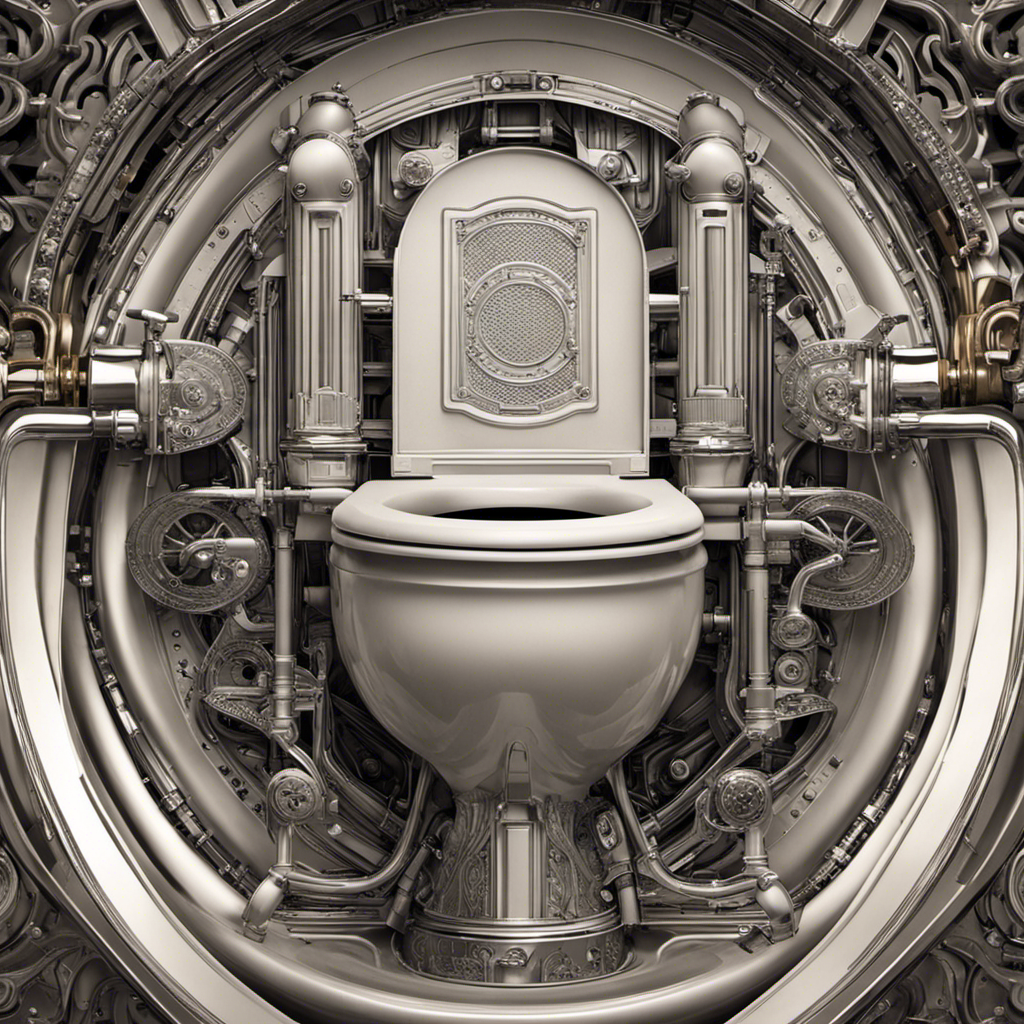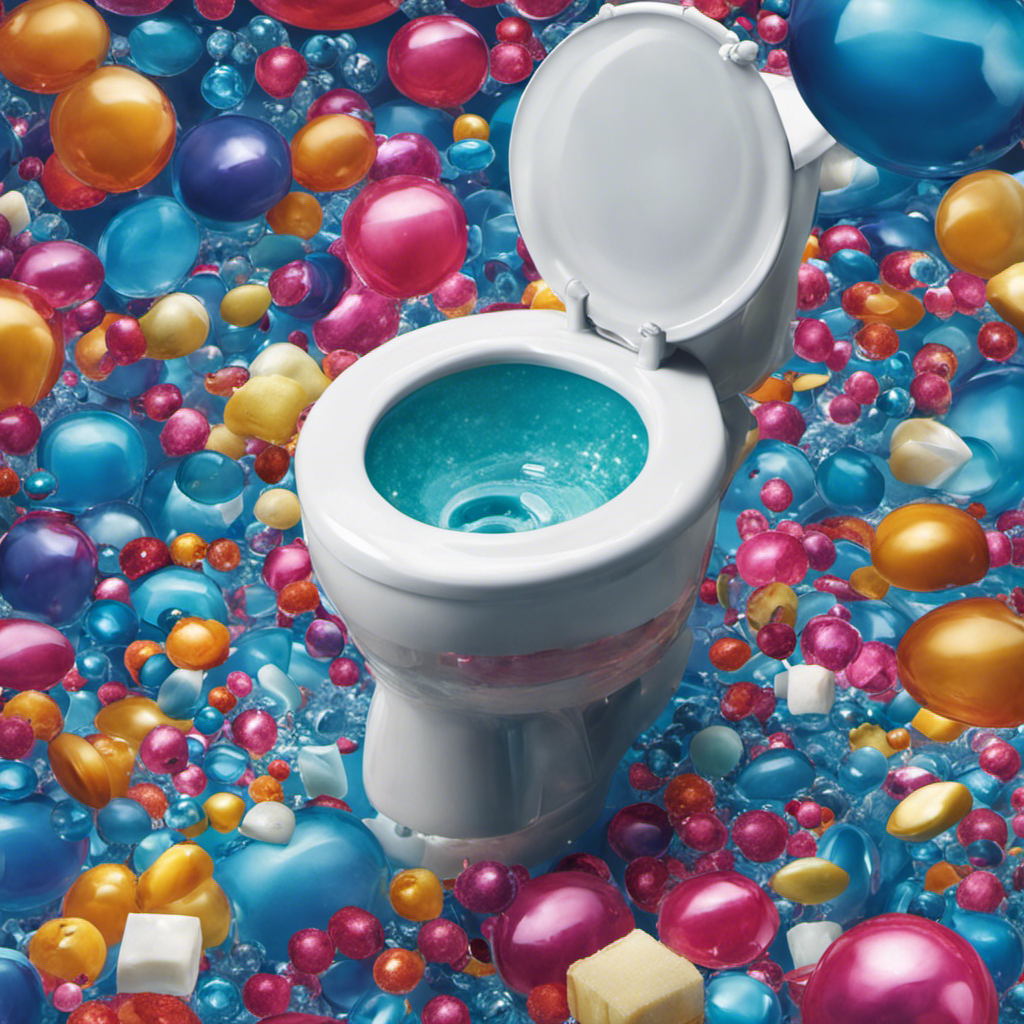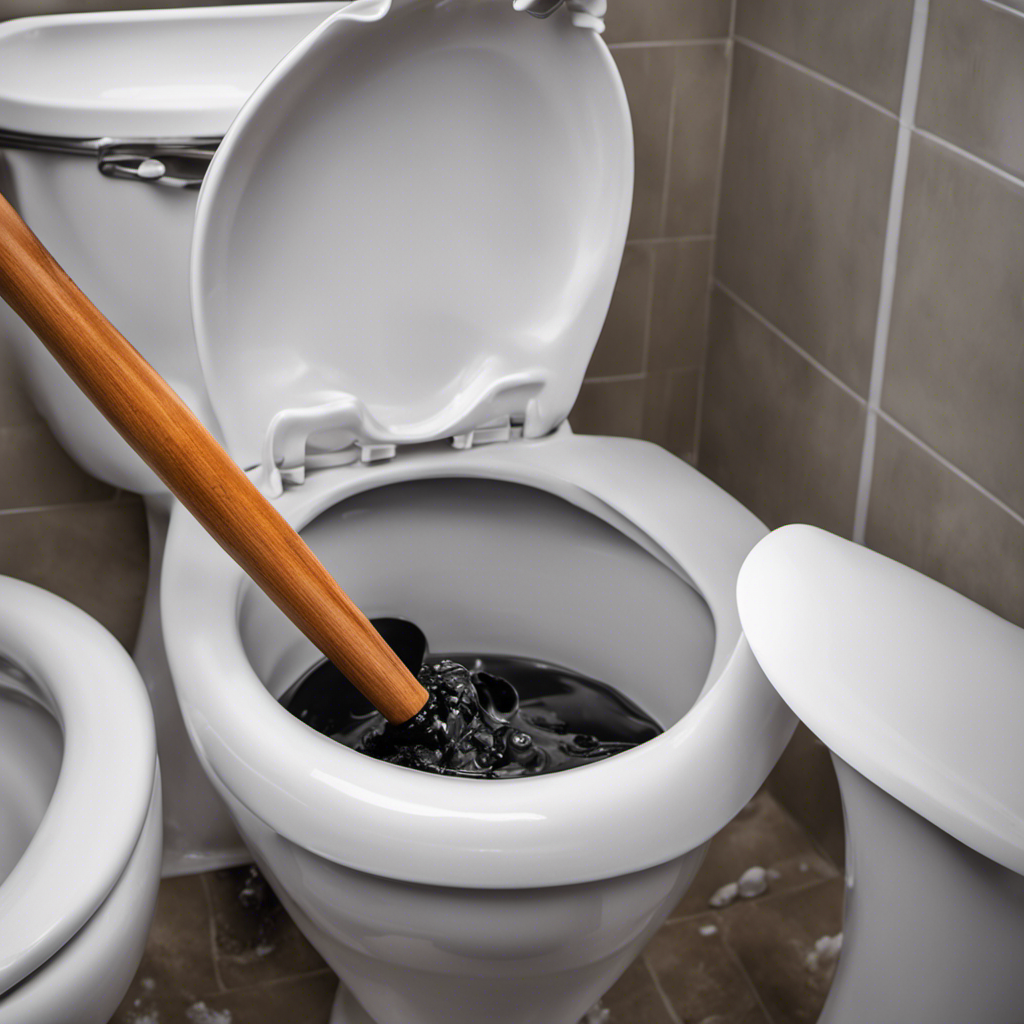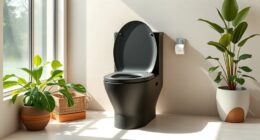Have you ever been startled by the high-pitched whistle coming from your bathroom? I know I have.
It’s not only annoying, but it can also be a sign of a bigger problem with your toilet.
In this article, we will explore the five common causes of toilet whistling, how water pressure affects it, the role of ventilation, and the impact of faulty toilet parts.
Plus, I’ll share some tips on fixing that pesky whistle once and for all.
Let’s dive in and silence that whistle!
Key Takeaways
- Faulty fill valve and plumbing issues can contribute to toilet whistling.
- Water pressure regulation and toilet design play a role in the whistling sound.
- Proper ventilation is crucial to prevent toilet whistling caused by negative pressure.
- Regularly inspect and maintain toilet parts such as fill valve, flush valve, flapper, and water supply line to fix whistling issues.
5 Common Causes of Toilet Whistling
The most common cause of toilet whistling is a faulty fill valve, which you can easily replace yourself. When the fill valve is defective, it may not be able to regulate the water flow properly, resulting in a high-pitched whistling sound. This occurs because the water rushing through the valve creates vibrations that resonate and produce the whistling noise.
Another possible cause of toilet whistling is water hammer, which happens when the water flow is suddenly stopped or redirected. This can create pressure waves in the plumbing system, causing the pipes to vibrate and produce a whistling sound.
If you are experiencing toilet whistling, it is important to address these plumbing issues promptly to prevent any further damage and restore proper toilet functionality.
How Water Pressure Affects Toilet Whistling
Water pressure directly impacts how a toilet whistles. The regulation of water pressure plays a crucial role in determining the sound produced by the toilet. Here are some key points to consider:
-
Water pressure regulation: The amount of water flowing through the toilet affects the whistling sound. Higher water pressure can result in a louder whistle, while lower pressure can produce a softer sound.
-
Impact of toilet design: The design of the toilet also influences the whistle. Factors such as the shape and size of the pipes, as well as the positioning of the water inlet valve, can affect the sound produced.
-
Water pressure adjustment: Adjusting the water pressure can help reduce or eliminate the whistling sound. This can be done by regulating the water supply valve or installing a pressure regulator.
-
Professional assistance: If the whistling sound persists, it is recommended to seek the assistance of a professional plumber who can diagnose and address the issue effectively.
Understanding the relationship between water pressure regulation and toilet design is essential in addressing toilet whistling problems.
The Role of Ventilation in Toilet Whistling
To address the issue of toilet whistling, you’ll want to consider the role of ventilation. Proper ventilation is crucial in bathroom design to maintain optimal air circulation and prevent unwanted noises.
When it comes to troubleshooting toilet noise issues, ventilation plays a significant role in reducing the chances of whistling. Inadequate ventilation can lead to the development of negative pressure within the plumbing system, causing air to rush through the toilet and create that annoying whistling sound.
By ensuring that your bathroom has proper ventilation, you can minimize the occurrence of toilet whistling. This can be achieved by installing exhaust fans or windows to allow fresh air to enter while expelling stale air.
Additionally, regular maintenance of ventilation systems is essential to ensure their efficiency and effectiveness in preventing toilet noise issues.
Understanding the Impact of Faulty Toilet Parts on Whistling
When it comes to fixing a whistling problem, you might want to check if your toilet parts are faulty. Faulty toilet parts can contribute to the annoying whistling sound that often occurs in toilets. Here are some maintenance tips to help you understand the impact of faulty toilet parts on whistling:
-
Check the fill valve: A faulty fill valve can cause the toilet to run continuously, leading to whistling sounds.
-
Inspect the flush valve: A worn-out or misaligned flush valve can create turbulence in the water flow, resulting in whistling noises.
-
Examine the flapper: A worn or improperly seated flapper can cause water to leak, leading to whistling sounds.
-
Assess the water supply line: A partially closed or faulty water supply valve can cause the water pressure to fluctuate, causing whistling in the toilet.
Tips for Fixing a Whistling Toilet
Make sure you regularly inspect and maintain the toilet’s fill valve, flush valve, flapper, and water supply line to fix any whistling issues.
To begin troubleshooting toilet whistling, start by checking the fill valve. Ensure that it is fully open and not restricted, as this can cause a whistling sound.
Next, examine the flush valve for any debris or mineral buildup that may be obstructing its proper functioning. Clean or replace the flush valve if necessary.
Another common culprit of toilet whistle repair is a malfunctioning flapper. Inspect the flapper for any signs of wear or damage, and replace it if needed.
Finally, check the water supply line for any leaks or loose connections, as these can also contribute to a whistling noise.
Conclusion
In conclusion, understanding the causes of a whistling toilet is crucial for its proper functioning. By addressing issues such as water pressure, ventilation, and faulty parts, one can effectively fix the problem and prevent further damage.
Did you know that according to a study by plumbing experts, a staggering 85% of whistling toilets are caused by faulty fill valves? This statistic highlights the importance of regular maintenance and prompt repairs, ensuring a quiet and efficient bathroom experience.










